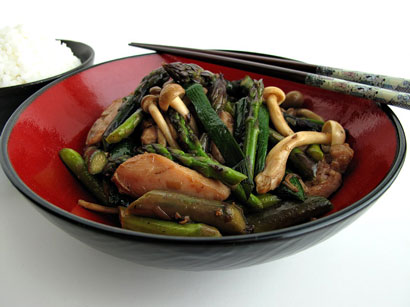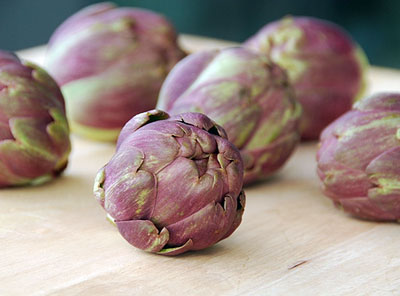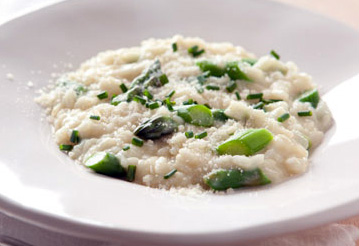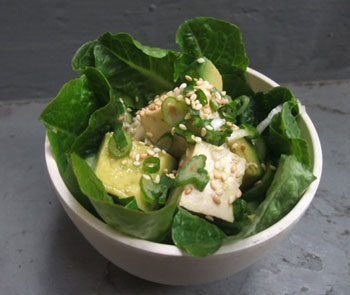 If you've been hoping to brush up on your stir-fry skills, there's no better time to do just that than now. Spring gives you the best opportunity with so many different vegetables to cook with—and they're all amazing in a stir-fry. There are green beans, broccoli, asparagus, and soon there will be peas, but in the meantime green garlic is what you should be looking for in the farmers' market.
If you've been hoping to brush up on your stir-fry skills, there's no better time to do just that than now. Spring gives you the best opportunity with so many different vegetables to cook with—and they're all amazing in a stir-fry. There are green beans, broccoli, asparagus, and soon there will be peas, but in the meantime green garlic is what you should be looking for in the farmers' market.
With a much more subtle garlic flavor than mature bulbs, green garlic looks more like scallions or baby leeks. But if you can't tell the difference at the market you'll just have to smell them. The stalks are entirely edible, from the pale white bulb to the dark green leaves. Green garlic is great for soup or used as an alternative to regular garlic. But it's more interesting in a dish that keeps its integrity and makes it the center of attention and this stir-fry does just that.
The recipe also includes another oddity of spring-purple asparagus. Raw it has a glorious purple color but once cooked it turns dark green, losing that deep hue. If you can't find purple asparagus, double up on green. One tip for making this stir-fry: Make sure to have all the ingredients prepped in advance because you don't want to be slicing the asparagus while the garlic is burning.

 I've always been a big Globe artichoke kind of girl. That was until a couple of years ago when I tried baby artichokes. Now, I have learned to divide my love between them both.
I've always been a big Globe artichoke kind of girl. That was until a couple of years ago when I tried baby artichokes. Now, I have learned to divide my love between them both. One day it's pouring rain and the next it's sunny and bright. Trees are already blooming with cherry blossoms, the delicate pink petals sometimes getting washed away in a sudden downpour. The hills all around the Bay Area are green and lush. And in the store you can find fresh strawberries, artichokes and asparagus.
One day it's pouring rain and the next it's sunny and bright. Trees are already blooming with cherry blossoms, the delicate pink petals sometimes getting washed away in a sudden downpour. The hills all around the Bay Area are green and lush. And in the store you can find fresh strawberries, artichokes and asparagus. This is a zen salad. For one thing, like meditation, it requires slowing down. Normally salad is something you throw together at the last minute. Not this one. Patience, little grasshopper. You need to marinate the tofu overnight. It's also simple and straightforward. And it requires no oil. I know what you're thinking, what does THAT have to do with being zen? I'll tell you. This is an enlightened salad. The avocado is rich enough that you really don't need any additional oil.
This is a zen salad. For one thing, like meditation, it requires slowing down. Normally salad is something you throw together at the last minute. Not this one. Patience, little grasshopper. You need to marinate the tofu overnight. It's also simple and straightforward. And it requires no oil. I know what you're thinking, what does THAT have to do with being zen? I'll tell you. This is an enlightened salad. The avocado is rich enough that you really don't need any additional oil. Chances are you didn't buy a bunny for your child this Easter. I know this because according to The Humane Society, sales of bunnies are down this year. That's a good thing, since many American kids fervently love their bunnies until the Tuesday after Easter.
Chances are you didn't buy a bunny for your child this Easter. I know this because according to The Humane Society, sales of bunnies are down this year. That's a good thing, since many American kids fervently love their bunnies until the Tuesday after Easter.
